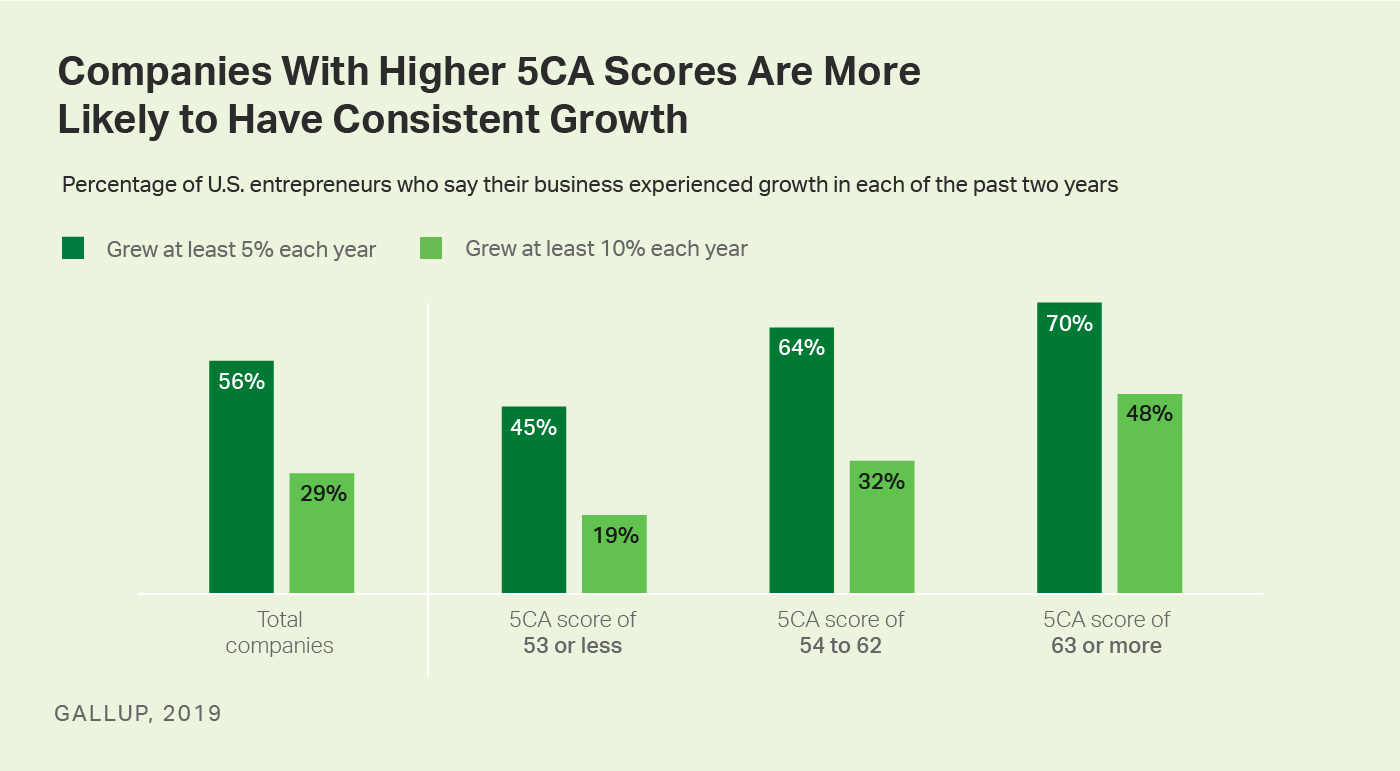Despite low U.S. unemployment, many Americans are unable to find work that provides them with a stable income and financial security. A recent Gallup study considering 10 aspects of job quality found that 40% of U.S. workers are in "good jobs" associated with a career mindset and higher ratings of their own lives. Many Americans cobble together a living working multiple jobs in the gig economy, with little opportunity for advancement. Thus, the question is as important as ever: Who is creating lasting, high-quality jobs in America?
Business startups are a critical and much-discussed source of total job creation, but they have a more limited effect on net job creation over time, simply because many startups fail in their first few years. Post-startup businesses, those that have made it through their first three years and have grown to at least $2 million in annual revenue, have the potential to create more good jobs over the long term -- if they can create the operating conditions necessary for predictable performance and consistent growth.
To help evaluate post-startup companies' progress regarding those conditions, TrueSpace and Gallup developed an online survey for business leaders, called the Five Conditions Assessment (5CA). The 5CA's theoretical framework is based on an in-depth qualitative study of 147 post-startups conducted by TrueSpace from 2014 to 2018. In 2019, TrueSpace partnered with Gallup to conduct a quantitative study of 2,494 business owners that tested how well various aspects of the Five Conditions framework predict differences in businesses' size and growth performance.
The results support the validity of the Five Conditions as important criteria for sustainable growth and job creation. Gallup estimates that if even 10% of post-startup businesses moved to top-tier performance on the 5CA, they would add 17 million high-quality jobs to the U.S. economy.

Age and Industry Are Not the Most Predictive of Business Growth
Some of the most notable findings from the study of business owners involve the discovery of factors that are not connected to post-startup companies' size and revenue growth over the past two years. One is the business' age: Post-startup companies that were 10 or more years old were no more likely than those that were three to five years old to be larger or have grown significantly in each of the past two years. This finding supports the notion that companies don't acquire the capacity for consistent, predictable performance with experience over time. Rather, that capacity is the result of concerted effort on the part of leaders, employees and other stakeholders, and can occur at any time in the life cycle of startups.
Also, despite the attention given to "high-growth" industries like IT and healthcare services, the industry in which post-startup companies operate is largely not predictive of performance. Nor are the demographic characteristics (gender and race) of the entrepreneurs. Together, companies' age, industry, and founders' demographics account for just 2% of the variation in performance. By contrast, Gallup determined that the 5CA captures 21% of the variation in performance, making it far more predictive of a business' size and recent growth rates.
So What Are the Five Conditions?
Each of the first four conditions measured by the 5CA -- Alignment, Discipline, Predictability and Endurance -- is significantly related to higher performance as measured by company size and recent growth rates.
-
The Alignment condition addresses the question, "Is the business growth-capable?" It measures how well a company has aligned its finite resources of time, capital and talent to focus on a clearly defined market and a distinctive point of view. Among the Five Conditions, scores on Alignment are most strongly related to business size and recent growth rates, suggesting the elements it measures are a critical foundation for growth.
-
The Discipline condition addresses the question, "Can the business scale?" It looks at businesses' efforts to identify and track key performance indicators and build a capacity for the kind of continual improvement necessary for scalable growth. Companies' Discipline scores relate only somewhat less strongly to their size and growth rates than do their Alignment scores.
-
The Predictability condition addresses the question, "Are the decision-makers continuously learning?" with the recognition that leaders can draw on past growth experiences to improve their decision-making. Predictability is at the heart of the 5CA framework, as it gauges how well feedback systems in the first two conditions are helping leaders set appropriate performance targets and consistently meet them.
-
The Endurance condition addresses the question, "Can employees and other stakeholders endure the growth journey?" It looks at businesses' efforts to monitor and maintain an emotional commitment to the company among employees and other stakeholders. The systems assessed in the Endurance condition help ensure the organization's long-term sustainability.
The fifth condition, Value Creation, is an outcome in itself. It includes entrepreneurs' assessments of their businesses' ability to operate at a consistent and highly predictable pace, and the extent to which they and other company stakeholders understand what creates value in the company. Companies with high Value Creation have instituted systems that ensure their organization's resources are aligned with their most high-value objectives, and feedback loops that continually improve leaders' ability to achieve them. Companies that nail Value Creation are also among the safest bets to create large numbers of high-quality jobs in the coming years.
For more information about the Five Conditions Assessment, please download the full report from TrueSpace and Gallup, or visit www.truespace.com.




